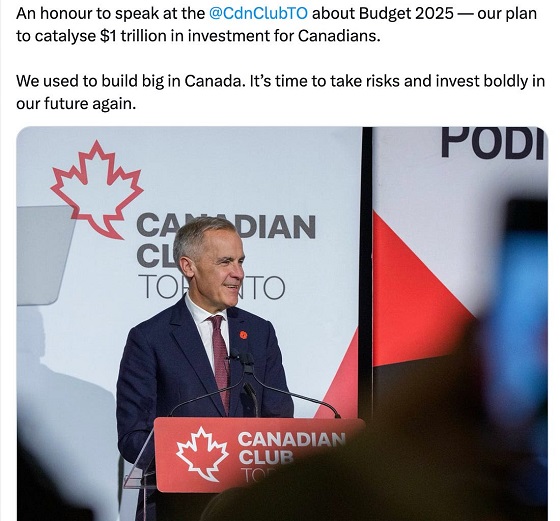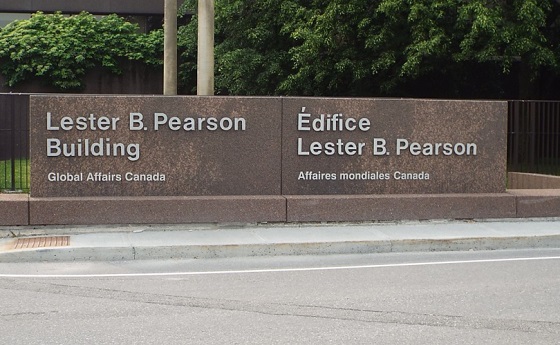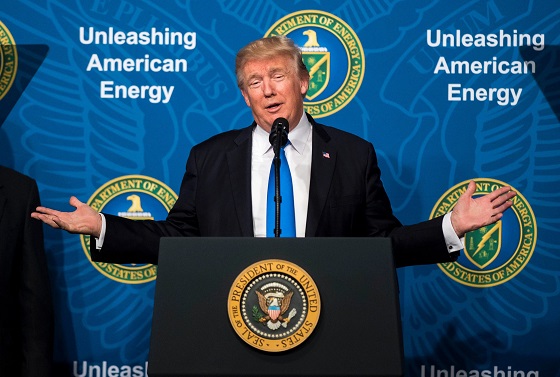Uncategorized
At Southeast Asian summit, pushback against going it alone

SINGAPORE — The annual gathering of Southeast Asian leaders began Tuesday with a warning from the host, Singapore Prime Minister Lee Hsien Loong, about threats against international rules that underpin world stability and economic growth.
“The international order is at a turning point,” Lee said at the opening ceremony of the summit of the 10-nation Association of Southeast Asian Nations.
“The existing free, open and rules-based multilateral system, which has underpinned ASEAN’s growth and stability, has come under stress,” Lee said.
U.S. President Donald Trump’s “America First” foreign policy and his resistance to multilateral agreements and institutions are viewed as an affront and a challenge in a region whose modern economies are largely driven by global trade.
Among issues on the agenda for ASEAN and other leaders attending meetings in Singapore this week, including U.S.
Lee said ASEAN and other participating countries including India and China, but not the United States, have made “substantive progress” on the market-opening initiative, called the Regional Comprehensive Economic Partnership.
However, it’s unclear if a deal will be reached in Singapore. Participants say India, for one, is balking at opening its markets wider to imports from China under the accord.
Trump is staying away from the Singapore summit, and also from the annual meetings of the Asia-Pacific Economic Cooperation forum that will begin later this week in Port Moresby, Papua New Guinea.
Chinese leaders are busy burnishing their own free trade credentials as they speak out against Trump’s efforts to get Beijing to change policies aimed at making Chinese industries leaders in advanced technologies.
Three days after taking office, Trump pulled out of a Pacific Rim trade initiative, the Trans-Pacific Partnership. He has ordered punitive tariffs on billions of dollars of Chinese products, among other measures, to address complaints over the U.S. trade deficit, China’s technology policies and other market access issues.
“All countries are linked in the same industrial chain in the world today and China and the U.S. are an important part of it. No one wants or expects to see an interruption of it,” Chinese Premier Li Keqiang said Tuesday in a lecture on the sidelines of the summit.
ASEAN groups Brunei, Cambodia, Indonesia, Laos, Malaysia, Myanmar, the Philippines, Singapore, Thailand and Vietnam.
The globalization of manufacturing has been a key factor driving dynamic growth in the regional economy, which has more than doubled in size since 2007 to $2.8 trillion in 2017.
The momentum must be in the direction of more, not less, open trade, said Malaysian Prime Minister Mahathir Mohamad.
Otherwise, he warned, there could be a “domino effect” in which countries engage in increasingly protective measures against their rivals.
Inward-looking, protectionist policies have gained ground in ASEAN as elsewhere, he said.
“This is not the time to close our doors by invoking trade protectionism measures but instead we should be actively engaged in finding amicable solutions,” Mahathir said. “It is now that we must continue to expand our intraregional trade and deepen the economic integration within ASEAN.”
While talks on the ASEAN-
Renamed the Comprehensive and Progressive Trans-Pacific Partnership, it is due to take effect on Dec. 30.
Several other economies are hoping to join the pan-Pacific accord, including the Philippines and South Korea.
Japanese media reported that Taiwan’s representative in the Asia-Pacific Economic Cooperation forum, former chairman of Taiwan Semiconductor Manufacturing Co. Morris Chang, plans to ask Japan to back the island’s request to also become a member.
___
Associated Press video journalist Jerry Harmer contributed to this report.
Annabelle Liang And Elaine Kurtenbach, The Associated Press
Uncategorized
Trump Admin Establishing Council To Make Buildings Beautiful Again


From the Daily Caller News Foundation
By Jason Hopkins
The Trump administration is creating a first-of-its-kind task force aimed at ushering in a new “Golden Age” of beautiful infrastructure across the U.S.
The Department of Transportation (DOT) will announce the establishment of the Beautifying Transportation Infrastructure Council (BTIC) on Thursday, the Daily Caller News Foundation exclusively learned. The BTIC seeks to advise Transportation Secretary Sean Duffy on design and policy ideas for key infrastructure projects, including highways, bridges and transit hubs.
“What happened to our country’s proud tradition of building great, big, beautiful things?” Duffy said in a statement shared with the DCNF. “It’s time the design for America’s latest infrastructure projects reflects our nation’s strength, pride, and promise.”
“We’re engaging the best and brightest minds in architectural design and engineering to make beautiful structures that move you and bring about a new Golden Age of Transportation,” Duffy continued.
Mini scoop – here is the DOT’s rollout of its Beautifying Transportation Infrastructure Council, which will be tasked with making our buildings beautiful again. pic.twitter.com/
9iV2xSxdJM — Jason Hopkins (@jasonhopkinsdc) October 23, 2025
The DOT is encouraging nominations of the country’s best architects, urban planners, artists and others to serve on the council, according to the department. While ensuring that efficiency and safety remain a top priority, the BTIC will provide guidance on projects that “enhance” public areas and develop aesthetic performance metrics.
The new council aligns with an executive order signed by President Donald Trump in August 2025 regarding infrastructure. The “Making Federal Architecture Beautiful Again” order calls for federal public buildings in the country to “respect regional architectural heritage” and aims to prevent federal construction projects from using modernist and brutalist architecture styles, instead returning to a classical style.
“The Founders, in line with great societies before them, attached great importance to Federal civic architecture,” Trump’s order stated. “They wanted America’s public buildings to inspire the American people and encourage civic virtue.”
“President George Washington and Secretary of State Thomas Jefferson consciously modeled the most important buildings in Washington, D.C., on the classical architecture of ancient Athens and Rome,” the order continued. “Because of their proven ability to meet these requirements, classical and traditional architecture are preferred modes of architectural design.”
The DOT invested millions in major infrastructure projects since Trump’s return to the White House. Duffy announced in August a $43 million transformation initiative of the New York Penn Station in New York City and in September unveiledmajor progress in the rehabilitation and modernization of Washington Union Station in Washington, D.C.
The BTIC will comprise up to 11 members who will serve two-year terms, with the chance to be reappointed, according to the DOT. The task force will meet biannually. The deadline for nominations will end Nov. 21.
Uncategorized
New report warns WHO health rules erode Canada’s democracy and Charter rights

The Justice Centre for Constitutional Freedoms has released a new report titled Canada’s Surrender of Sovereignty: New WHO health regulations undermine Canadian democracy and Charter freedoms. Authored by Nigel Hannaford, a veteran journalist and researcher, the report warns that Canada’s acceptance of the World Health Organization’s (WHO) revised International Health Regulations (IHR) represents a serious erosion of national independence and democratic accountability.
The IHR amendments, which took effect on September 19, 2025, authorize the WHO Director-General to declare global “health emergencies” that could require Canada to follow directives from bureaucrats in Geneva, bypassing the House of Commons and the will of Canadian voters.
The WHO regards these regulations as “binding,” despite having no ability or legal authority to impose such regulations. Even so, Canada is opting to accept the regulations as binding.
By accepting the WHO’s revised IHR, the report explains, Canada has relinquished its own control over future health crises and instead has agreed to let the WHO determine when a “pandemic emergency” exists and what Canada must do to respond to it, after which Canada must report back to the WHO.
In fact, under these International Health Regulations, the WHO could demand countries like Canada impose stringent freedom-violating health policies, such as lockdowns, vaccine mandates, or travel restrictions without debate, evidence review, or public accountability, the report explains.
Once the WHO declares a “Pandemic Emergency,” member states are obligated to implement such emergency measures “without delay” for a minimum of three months.
Importantly, following these WHO directives would undermine government accountability as politicians may hide behind international “commitments” to justify their actions as “simply following international rules,” the report warns.
Canada should instead withdraw from the revised IHR, following the example of countries like Germany, Austria, Italy, Czech Republic, and the United States. The report recommends continued international cooperation without surrendering control over domestic health policies.
Constitutional lawyer Allison Pejovic said, “[b]y treating WHO edicts as binding, the federal government has effectively placed Canadian sovereignty on loan to an unelected international body.”
“Such directives, if enforced, would likely violate Canadians’ Charter rights and freedoms,” she added.
Mr. Hannaford agreed, saying, “Canada’s health policies must be made in Canada. No free and democratic nation should outsource its emergency powers to unelected bureaucrats in Geneva.”
The Justice Centre urges Canadians to contact their Members of Parliament and demand they support withdrawing from the revised IHR to restore Canadian sovereignty and reject blind compliance with WHO directives.
-

 armed forces2 days ago
armed forces2 days agoIt’s time for Canada to remember, the heroes of Kapyong
-

 Business2 days ago
Business2 days agoCarney’s Floor-Crossing Campaign. A Media-Staged Bid for Majority Rule That Erodes Democracy While Beijing Hovers
-

 Business1 day ago
Business1 day agoLiberals refuse to disclose the amount of taxpayer dollars headed to LGBT projects in foreign countries
-

 Daily Caller22 hours ago
Daily Caller22 hours agoUS Nuclear Bomber Fleet Shares Fence With Trailer Park Linked To Chinese Intel-Tied Fraudster
-

 Agriculture2 days ago
Agriculture2 days agoBovaer Backlash Update: Danish Farmers Get Green Light to Opt Out as UK Arla Trial Abruptly Ends!
-

 Digital ID1 day ago
Digital ID1 day agoCanada moves forward with digital identification for federal benefits seekers
-

 Alberta1 day ago
Alberta1 day agoSchool defunding petition in Alberta is a warning to parents
-

 espionage21 hours ago
espionage21 hours agoChinese-Owned Trailer Park Beside U.S. Stealth Bomber Base Linked to Alleged Vancouver Repression Case








